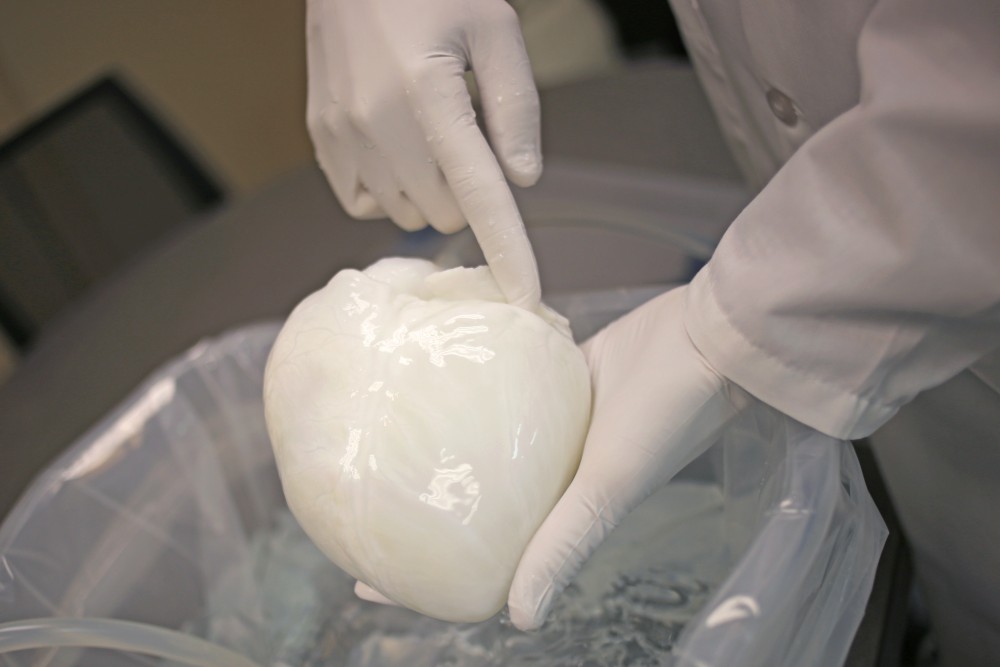More than 100,000 Americans are waiting for an organ transplant, and Minnesota researchers think pigs could help them.
Miromatrix Medical Inc., an Eden Prairie biotechnology company, works to create human organs from pig organs with a process called perfusion decellularization and recellularization. They hope to conduct a pig-to-human transplant by 2020.
“Our end goal is to create transplantable organs,” said Jeff Ross, University alumnus and CEO of Miromatrix.
The method could solve the organ donor shortage, said Angela Panoskaltsis-Mortari, a Univeristy medical professor who researches lung decellularization.
“We need new sources of transplantable tissue,” she said.
Decellularization strips an organ or tissue of all its cells and leaves an empty organ, what scientists call a scaffold. They then add cells to the scaffold, called recellularization, and repopulate it to make a functional living organ.
“[The cells] naturally … migrate to their native microenvironment or location within that organ, so they essentially kind of reanimate or reconstruct the organ,” Ross said.
The process is similar to remodeling a house, he said. Cells are like the drywall and when you take that away, the frame of the house remains.
The origins of this process started back in 2008, when then University professor and Miromatrix Founder Doris Taylor pioneered the method.
Taylor and her University lab first created the method when they decellularized a rat heart and repopulated it with rat cells, bringing a dead heart back to life.
The breakthrough caused researchers around the world to delve into this method of organ regeneration, she said.
Taylor, now the director of regenerative medicine research at the Texas Heart Institute, said the method works because once cells are stripped away the only thing left is called an extracellular matrix, a protein-based framework, and the new cells eventually replace it.
The matrix allows cells to communicate and act as a whole organ, instead of as individual cells, and it does not seem to differ much between some animals, like humans and pigs, Taylor said. Still, compatibility differs from organ to organ.
When pigs fly
In the next year, Ross plans to be the first to transplant a recellularized pig organ into a live pig. After that, he and his team will start an attempt to apply it to humans.
The idea is to take all the cells from a pig liver and replace them with human cells, essentially creating a human liver, Ross said.
Pig organs work best for a few reasons, Ross said. They are very similar to human organs and easier to come by.
He said they use organs from pigs that were already on their way to the dinner table.
“There’s an endless supply of pig organs that aren’t being utilized today. We can change that into lifesaving technology,” Ross said.
While it seems farfetched, Taylor is confident one could turn a pig organ into a human organ. Surgeons already regularly transplant pig heart valves into people, she said.
Currently, Miromatrix uses decellularized pig livers to make products used by human patients for hernia and wound repair.
A variety of applications
Ross focuses on transforming pig livers to human livers, but other researchers have a wide variety of hopes for this method.
At the University, Angela Panoskaltsis-Mortari researches how to make a living lung tissue with pig organs and decellularization.
This research can also help to understand lung biology, she said.
Brian Carlsen, associate professor of orthopedic surgery and plastic surgery in the Mayo College of Medicine in Rochester, is looking at how they might use it on skin, muscle and bone regeneration.
“We’re trying to use what biology has already done in an animal … and take advantage of that and create a human tissue,” he said.
Carlsen said an advantage of this method is the ability to use the patient’s own cells, which would keep the patient’s body from rejecting the transplant.
Ross focuses on creating livers, but Miromatrix also researches how to do this with kidneys.
“Over 450 thousand patients today are on dialysis, our goal would be to get patients completely off of dialysis and give them a better solution through transplantable kidneys,” he said.







